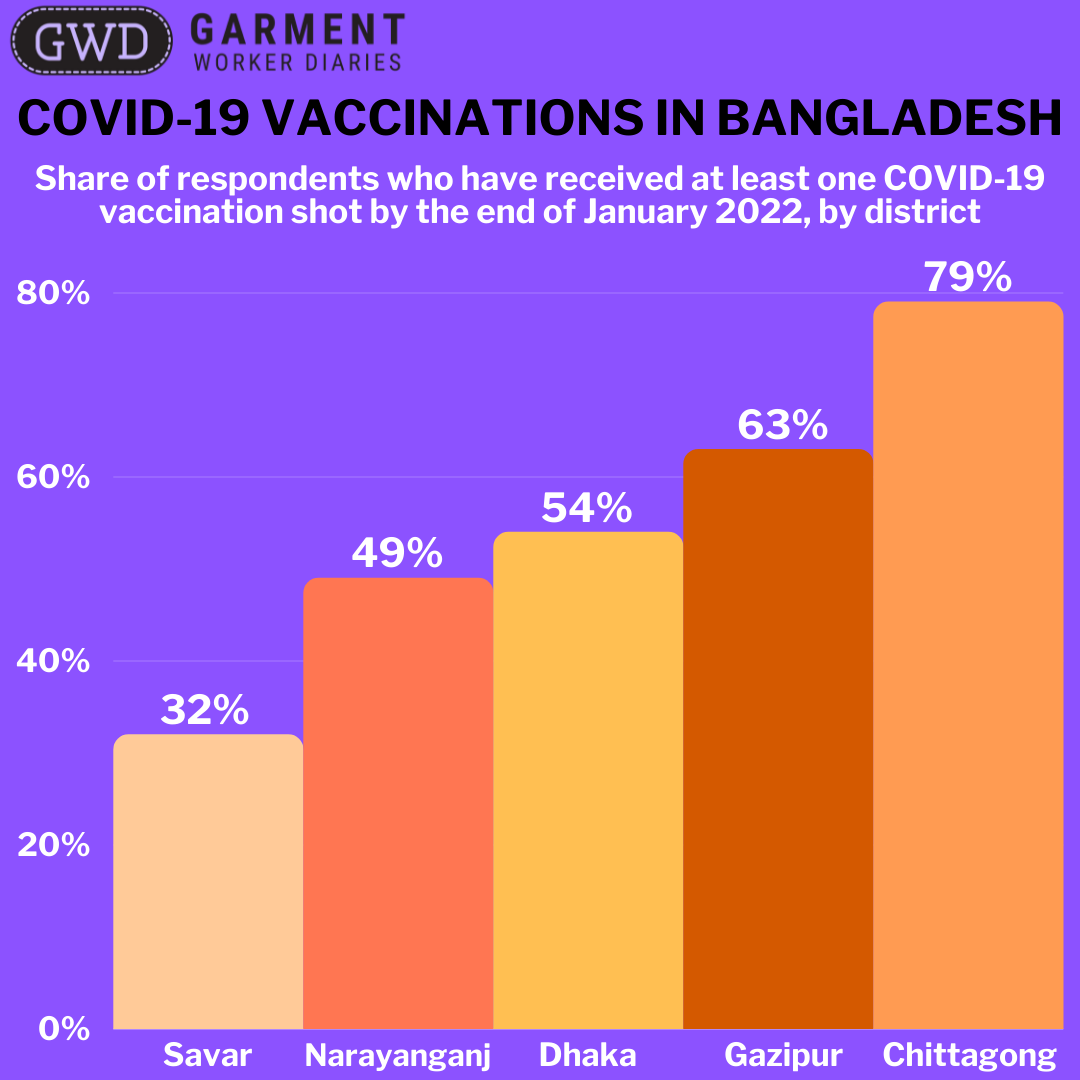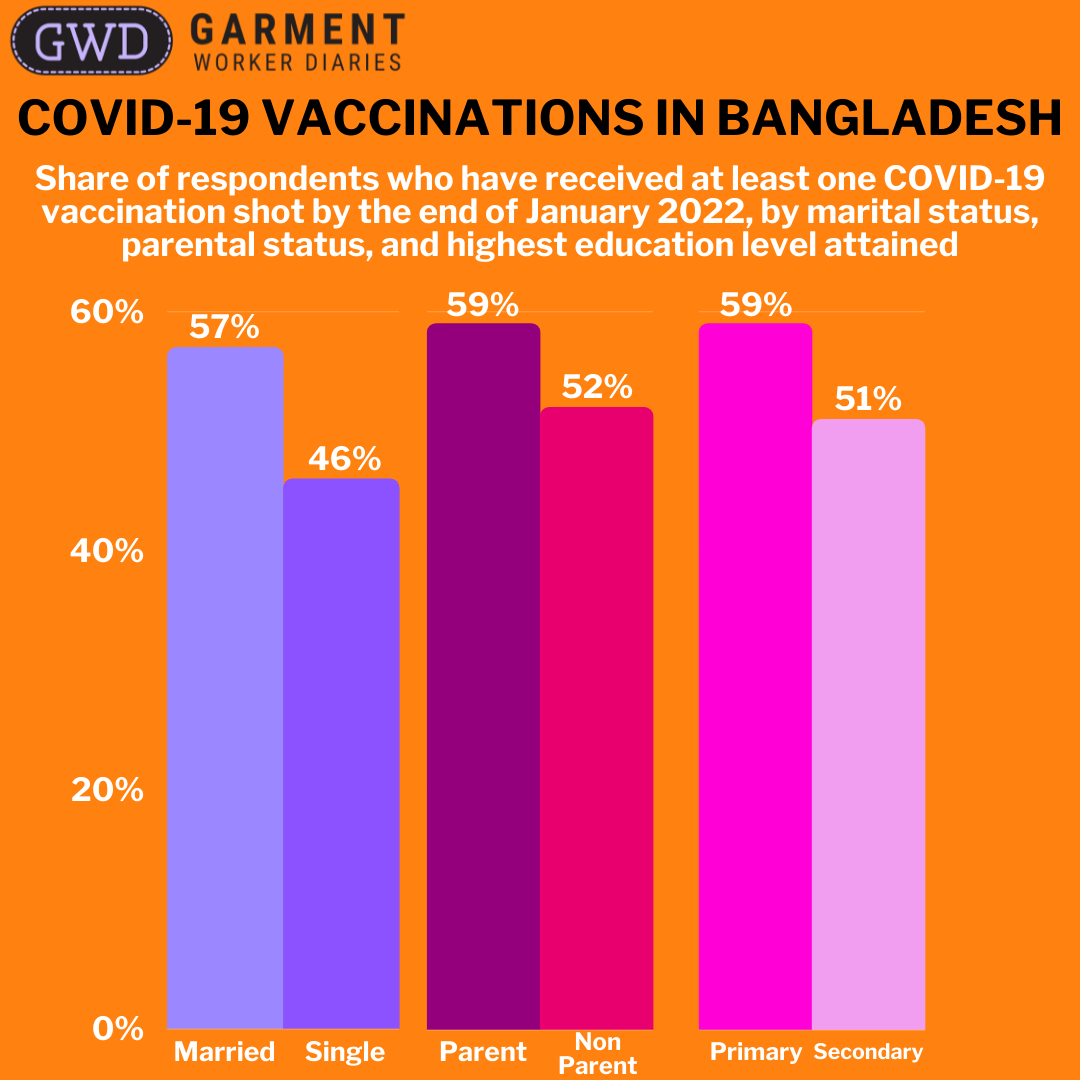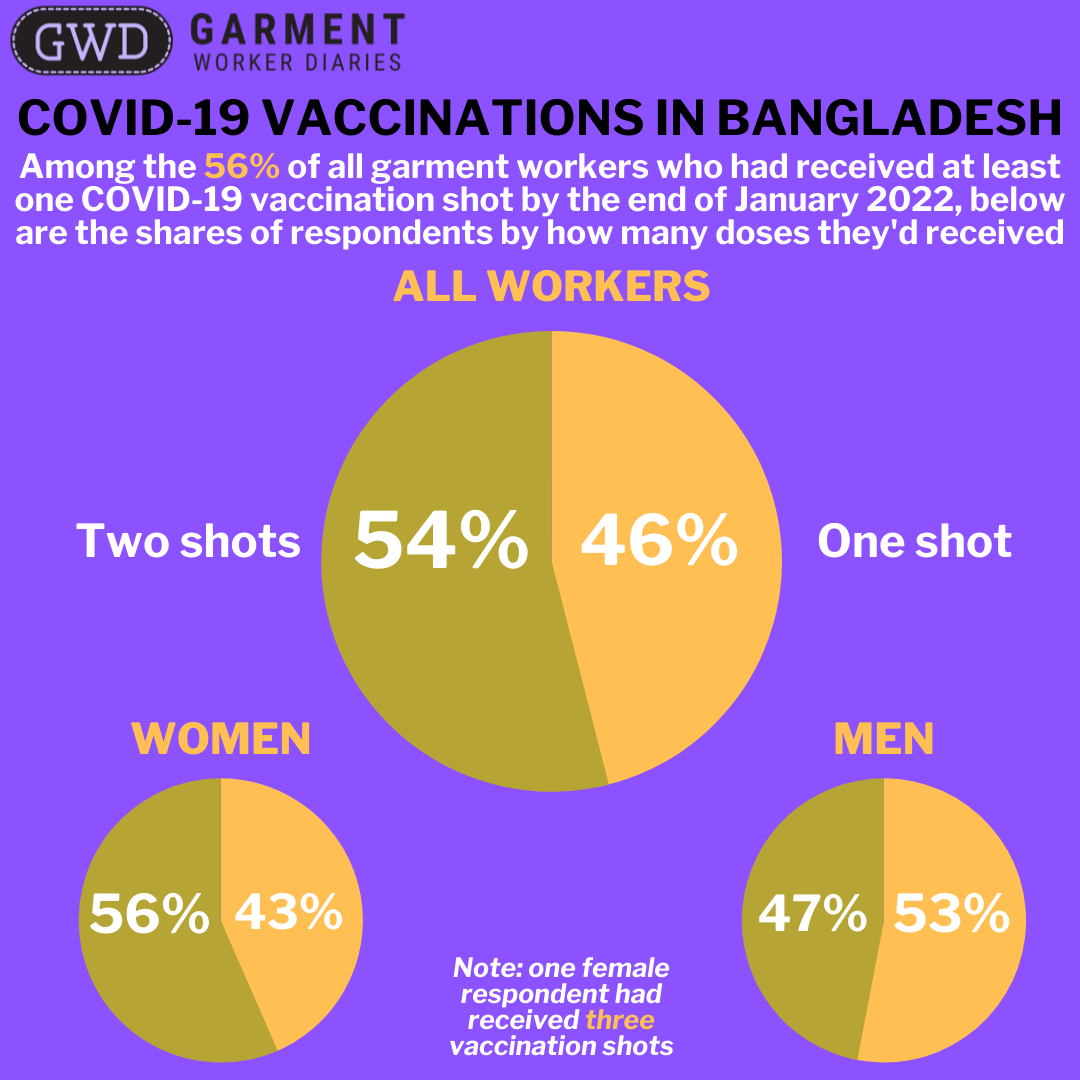It’s been a few months since we’ve provided readers with an update on the COVID-19 vaccination status among garment workers in Bangladesh. This is because we wanted to provide more information about the demographics of the workers who are receiving vaccination shots, as well as some nuance as to how many doses of the vaccine they’ve received.
Note: Banner photo courtesy of a garment worker in Bangladesh; numbers in graphs may not sum to 100% due to rounding.
Among all 1,279 respondents (974 women and 305 men) who had been a part of our study since the vaccine became available in early 2021, and were also available to provide answers to a subsequent vaccination survey in late January 2022, 56% had received at least one vaccine shot by the end of January 2022. Women were less likely than men to have received a shot: 53% compared to 62%.
Of that 56% who had received at least one shot, here is the breakdown by number of doses, regardless of gender:
- 46% had received one dose
- 54% had received two doses
- One respondent said they had received three doses
When we add gender to the comparison, women were more likely than men to have reported receiving two doses (even though they were slightly less likely to have received any number of shots):
- 43% of women had received one dose, compared to 53% for men
- 56% of women had received two doses, compared to 47% for men
- One woman (and zero men) had received three doses
According to COVID-19 Vaccine Tracker, which uses publicly available data to compile its results, there are seven vaccines approved in Bangladesh. At this time, we do not have information on which brand of vaccination shot workers have received—getting workers to report this to us is very difficult. However, based on a “user manual” published by the Bangladeshi government itself, at least two doses of the vaccine are recommended. It might be safe then to assume that the most readily available vaccines are of the two-dose variety. The one-shot J&J vaccine was approved later than most of the other brands.
Regarding the demographics of workers who had received vaccination shots, some interesting results were uncovered:
- Garment workers who were parents were more likely to have received a vaccination shot than workers who weren’t parents, 59% compared to 52%
- Married workers were more likely to have received a shot than unmarried workers, 57% to 46%
- Workers who had completed some or all of their primary education, but not secondary education, were slightly more likely to have received a shot than workers who had attained at least some or all of a secondary education, 59% compared to 51%
- Workers in the lowest wage grade, designated as “helpers”, were slightly less likely to have received a shot than higher-earning wage grades (although, the spread was close: 61% of “general” workers, one wage grade up from helpers, had received a shot at the high end, compared to 52% of helpers at the low end)
- The most demographic variability was detected when we looked at which district a worker lived in: only 32% of respondents in Savar, on the low end, had received at least one vaccination shot, while workers living in Chittagong, at a share of 79%, were much more likely to have received at least one shot (the other three districts, Gazipur, Dhaka, and Narayanganj, hovered in between, with vaccination rates of 63%, 54% and 49%, respectively). It might be worth noting here that Chittagong is located further south along the Bay of Bengal away from Dhaka’s urbanized area, which is where the four other zones are located.
The data used for the analysis presented here come from interviews conducted over the phone throughout 2021 and early 2022 with a pool of 1,279 workers. These workers are employed in factories spread across the five main industrial areas of Bangladesh (Chittagong, Dhaka City, Gazipur, Narayanganj, and Savar). Just over three-quarters of the working respondents are women, roughly representative of workers in the sector as a whole.





